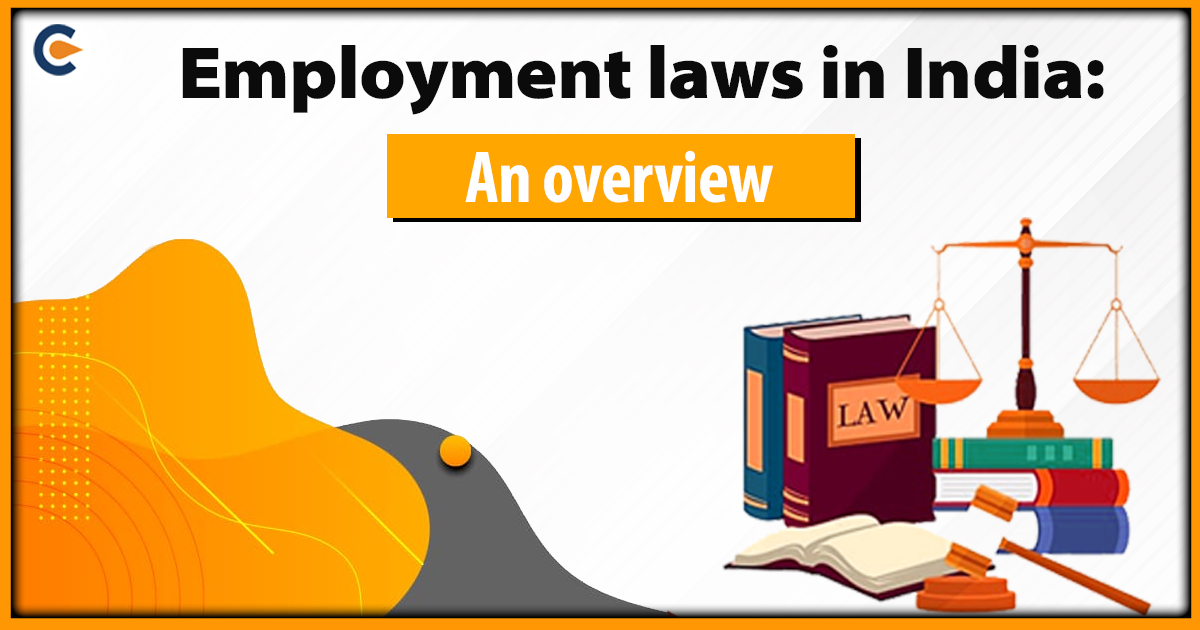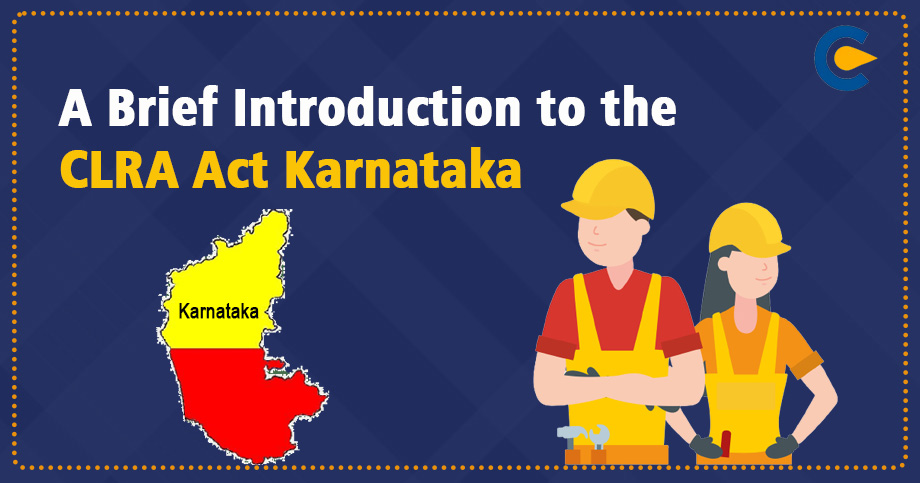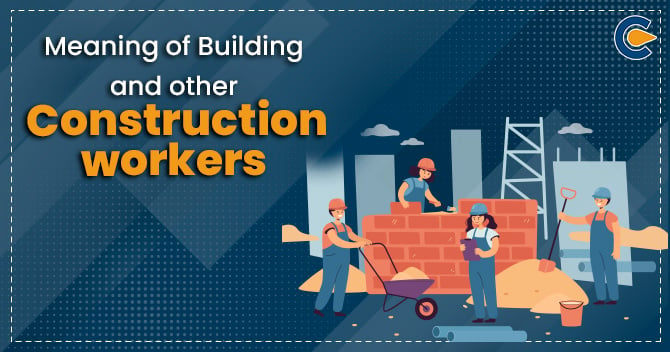“A nation may do without its millionaires and without its capitalists, but a nation can never do without its labour” – Mahatma Gandhi
Employment laws in India: Overview
The employment laws in India are a set of rules and regulations that oversee the relationship between employers and employees also among the employees themselves, the rules related to working hours, leaves, their rights and duties, what to do when a dispute arises, rules in case of death taking place at the working place, bonus, wages, compensations, PFs, health and hygiene etc. The employment laws have been an essential part of the justice system for a long time.
In this blog we will explore the key employment laws in India, the evolution of employment laws in India and some of the key employment laws that are common for all types of business.
Why should a country have employment laws?
The employment laws in India serve as a tool to support both employee protection and employment empowerment. The employment laws protect both collective and individual employment relations. The civil code, penal code, constitutional law, and the international ILO Conventions are examples of pertinent laws that have been established in India. Employment law seeks to address the power disparity between employers as well as the employees; they prohibit employers from firing employees without giving them any reason; these laws establish and maintain procedures that allow employees to be treated as “equal” stakeholders in discussions concerning their working circumstances along with various other things.
The goal of labor law is to put an end to an upward spiral towards the bottom through restrictions on the ability of contractual parties to agree on any terms they like and by establishing minimum requirements for compensation and safety. Labor law governs the labor market as well. An entire country has the power to enact laws that establish minimum or maximum thresholds for pay or hours worked, either nationally or within certain industries or sectors.
One of the major reasons which lead to the establishment of employment laws in India was for the betterment of the employees. On international level ILO i.e. International Labour Organization is one of the first key international organizations which were established to resolve and oversee employee issues all around the world.
Employment laws are the backbone of the country. The foundation of the employment laws in India was British colonialism. Naturally, the British political system played a significant role in forming some of these initial laws. The Factories Act was born. The textile entrepreneurs of Manchester and Lancashire exerted pressure on the British parliament in the year 1883 in order to pass the Factories Act, which aimed to make labour in India pricey. It is widely known that Indian textile products posed fierce competition for British textile-related goods in the export market.
The Trade Dispute Act of 1929 was the first Indian regulation that regulated the interaction between an employer and his workers. This Act had provisions to limit the ability to strike and lockout, but it lacked any conflict resolution mechanisms.
The history and origin of employment laws in India likely began about 1860. The public’s attention was drawn to the appalling working conditions in Bombay factories in 1872. As a result, the Factories Act was passed for the first time in 1881. It was subsequently changed numerous times before taking shape in 1948. Even though the ESI Act of 1948 [Employees’ State Insurance Act] provided social security to industrial workers, additional social security was supplied through the Workmen Compensation Act of 1923 by implementing certain ILO treaties.
What Are The Key Sources Of Employment Laws In India?
In this section, the authors have talked about two sources of employment laws, i.e., the Constitution of India and Judicial bodies. The core source that talks about employment laws is covered in the later part of this article.
Constitution of India: Here is the list of Articles under the Indian Constitution that are related to employment:
- Article 14 talks about equality before the law
- Article 16 prohibits the state from discriminating on the basis of religion, race, caste, sex, place of birth, residence, and equal opportunity in public employment.
- Article 19 talks about the right to free speech and expression, the right to assemble in unions or associations, and the right to practice any profession.
- Article 21 encompasses the right to life and liberty.
- Article 23- States that human trafficking and beggar and other similar forms of forced labour are prohibited. The article also states that if the employer is not paying the minimum wage to the worker, then it will account for slavery.
- Article 24 prohibits the employment laws of children under the age of 14 in any factory, mine or any hazardous occupation.
- Article 39 (a) states that every citizen of the country has the right to earn a livelihood without getting discriminated against on the basis of their sex.
- Article 39 (d) – It directs the state to make a Policy towards securing; that there is equal pay for equal work for both men and women. Wages will not be determined on the basis of sex. Rather they will be according to the amount of work done by the worker.
- Article 41- It talks about the right to work, and the state has the duty to secure the right to work and education.
- Article 42-It talks about the upliftment of the working conditions for workers. It talks about creating a suitable and humane workplace. This article also talks about maternity relief, i.e., leave provided to women when they are pregnant.
- Article 43-It talks about the “living wage” for its citizens. Living wage not only includes the “bare necessities of life” but also the social and cultural upliftment of the person. It also includes education and insurance for a person.
Employment laws in India
Some of the employment laws in India that have been practiced since decades are:
- The Employees State Insurance Act, 1948
- The Dock Workers (Safety, Health and Welfare) Act, 1986
- The Mines Act, 1952
- The Beedi Workers Welfare Fund Act, 1976
- The Cine Workers Welfare Fund Act, 1981,
- The Child Labour (Prohibition and Regulation) Act, 1986
- The Equal Remuneration Act, 1976
- The Employees Provident Fund and Miscellaneous Provisions Act, 1952
- The Industrial Disputes Act, 1947
- The Industrial Employment (Standing Orders) Act, 1946
- The Inter-State Migrant Workmen (Regulation of Employment and Conditions of Service) Act, 1979
- The Maternity Benefit Act, 1961
- The Contract Labour (Regulation and Abolition) Act, 1970
- The Minimum Wages Act, 1948
- The Payment of Bonus Act, 1965
- The Payment of Gratuity Act, 1972
- The Payment of Wages Act, 1936
- The Employers Liability Act, 1938
- The Factories Act, 1948
- The Motor Transport Workers Act, 1961
- The Trade Unions Act, 1926
- The Workmen’s Compensation Act, 1923
- The Bonded Labour System (Abolition) Act, 1976
- The Beedi and Cigar Workers (Conditions of Employment) Act, 1966
The above mentioned are the acts and laws that have been established in India till date. Some of them have been repealed now, as with evolving times the employment laws have to be updates as well.
New Employment Laws in India
India has enacted new employment laws in India, which subsumed the old laws and codes related to employment laws in India.
| New Labour Law | Old Labour Law |
| Code on Wages, 2019 | Payment of Bonus Act, 1965Payment of Wages Act, 1936Equal Remuneration Act, 1976Minimum Wages Act, 1948 |
| Occupational Safety, Health, and Working Conditions Code Bill, 2020 | Factories Act, 1948Inter-State Migrant Workers Act, 1979The Plantations Labor Act, 1951The Working Journalist and Other News Paper Employees (Conditions of Service and Miscellaneous Provision) Act, 1955Mines Act, 1952Dock Workers Act, 1986Contract Labor Act, 1970The Working Journalist (Fixation of Rates of Wages) Act, 1958The Motor Transport Workers Act, 1961The Sales Promotion Employees (Conditions of Service) Act, 1976The Beedi and Cigar Workers (Conditions of Employment) Act, 1966 |
| Code on Social Security, 2020 | The Employees’ Compensation Act, 1923The Employees’ Provident Funds and Miscellaneous Provisions Act, 1952The Employment Exchanges (Compulsory Notification of Vacancies) Act, 1959The Maternity Benefit Act, 1961The Payment of Gratuity Act, 1972The Cine-Workers Welfare Fund Act, 1981The Building and Other Construction Workers Welfare Cess Act, 1996The Employees’ State; Insurance Act, 1948The Unorganized Workers’ Social Security Act, 2008 |
| Industrial Relations Code Bill, 2020 | Trade Unions Act, 1926Industrial Employment (Standing Orders) Act, 1946Industrial Disputes Act, 1947 |
Common Important Employments Laws in India
Some of the essential points as per the new code under the employment laws in India are:
- It is now allowed for the employees to take a 3 week off.
- The working hours should not be more than forty-eight hours. A vacation of one week is given to the employees that work eight hours on the daily basis.
- When the individuals work in the within the organization for twelve hours per day, the company will be granting a vacation of three weeks to the individuals. And when someone works for nine hours, they can get 2 weeks off.
- When any professional is leaving the country, the company has to settle their final settlement within two days from departure date.
- A 26-week maternity leave will be now given to the females in the organization.
- In order to work in the night shift, a prior permission has to be taken by the employer in case of females.
- For the protection of female employees in the organization, there must be good facilities and security.
- The pay structure has to follow the changes made.
- The organization have to mandatorily pay their employees the overtime. After the completion of an eight hour shift any time that is more than 15 minutes has to be subject to this.
- The basic pay portion will increase, and the calculations of PF that rely on the basic wage will also see an increase. This implies that while the wage paid in cash would probably decline, the provisional employee fund will probably expand.
- Employees will be granted 180 days of vacation time when the new code is adopted, as opposed to the prior 244 days. In India, the last full and final payment is expected to be made within 45 days.
Landmark Judgment in India on Employment Laws in India
- Gammon India Ltd v. Union of India
The Court ruled that the government had the authority to forbid the employment of contract labour.
- Air India Statutory Corporation v. United Labour Union
In this decision, the Hon’ble Court ruled that the end of contract labour requires the former principal employer to hire the workers in regular job
- International Airport Authority of India v. International Air Cargo Union
Suppose the contract between the principal employer and the contractor is for the provision of labour. In that case, the contact employees will work under the direction of the principal employer. Still, because the contractor pays the salary, the ultimate oversight, control, and responsibility reside with the contractor.
- Uttar Pradesh Rajya Vidyut Utpadan Board v. Uttar Pradesh Vidyut Mazdoor Sangh
While the CLA requires wage parity between regular and contract workers for similar types of work, the principal employer can consider various factors such as workers’ skills, reliability, and responsibility in determining whether similar job done by the two categories of workers can be considered at par or otherwise for payment purposes.
- Hindustan Steelworks Construction Ltd. v. Commissioner of Labour
The principal employer is not obligated to make up the difference in pay paid to contract workers who perform the same task as regular workers.
- In Jacob Puliyel v. Union of India & Ors
The Supreme Court of India ruled that the restrictions imposed on those who have not been immunized against covid-19 are not legally valid. The Court also ruled that bodily integrity is a fundamental right protected by Article 21 of the Indian Constitution, and no one can be forced to be vaccinated.
- In Sudipta Banerjee and Ors v. LS Davar & Company and Ors
While hearing a dispute over breach of confidentiality, the Calcutta High Court delved into non-compete covenants and noted that Indian law has not advanced related laws as other jurisdictions have given the country’s complete ban on post-termination non-compete covenants. The Court emphasized the importance of revisiting current Indian contract law in terms of the inclusion of negative covenants in contracts.
Conclusion
In conclusion, the employment laws in India hold a significant position. The employment laws in India are one of the mandatory set of rules and regulation set for safeguarding the employees and the employers in India. India holds a very essential stance on the international level also by being a part of the ILO. All the companies and the business have to follow the labour laws and regulations set by the state as well as the central government in order to be in compliance. The non compliance of these rules and regulations under the employment laws of India can result in penalties and even imprisonment in severe cases.
Frequently Asked Questions
What is the limitation period for employment claims in India?
The limitation period for the employment claims in India is within three years.
In total how many employment laws in India are there?
The 2019 and 2020 parliament session approved 4 new labour codes in India. All the forty-four employment laws in India will now be all combined in the four new codes.
Does employment laws in India deal with how many total working hours should be there?
Yes, the employment laws in India have set standard on the total working hours for an organization; there is legislation in relation to overtime as well.
How many week maternity leave is granted under the employment laws in India?
A maternity leave of 26 weeks that is six months is granted under the under the employment laws in India.
What are the four new labour codes?
The four new labour codes are Code on Wages, Industrial Relations Code, Social Security Code and Occupational Safety, Health and Working Conditions Code.
What is included in the Code of Wages?
The Code of Wages includes the regulations related to wages, allowances, bonus, and any deductions etc in term of the employment.
Which new labour code will subsume the Minimum Wages Act?
The code on wages will subsume the Minimum Wages Act.
Which new labour law code subsumes the Trade Union Act?
The Industrial Relations Code Bill 2020 subsumes the Trade Union Act.
What is ILO?
The ILO is the International Labour Organization. This organization oversees the labour laws and labour rights. It is an international-level organization.
Is India a part of ILO?
India is one of the founding members of the International Labour Organization.
Read Our Article: All You Need To Know About The Labour Codes In India











